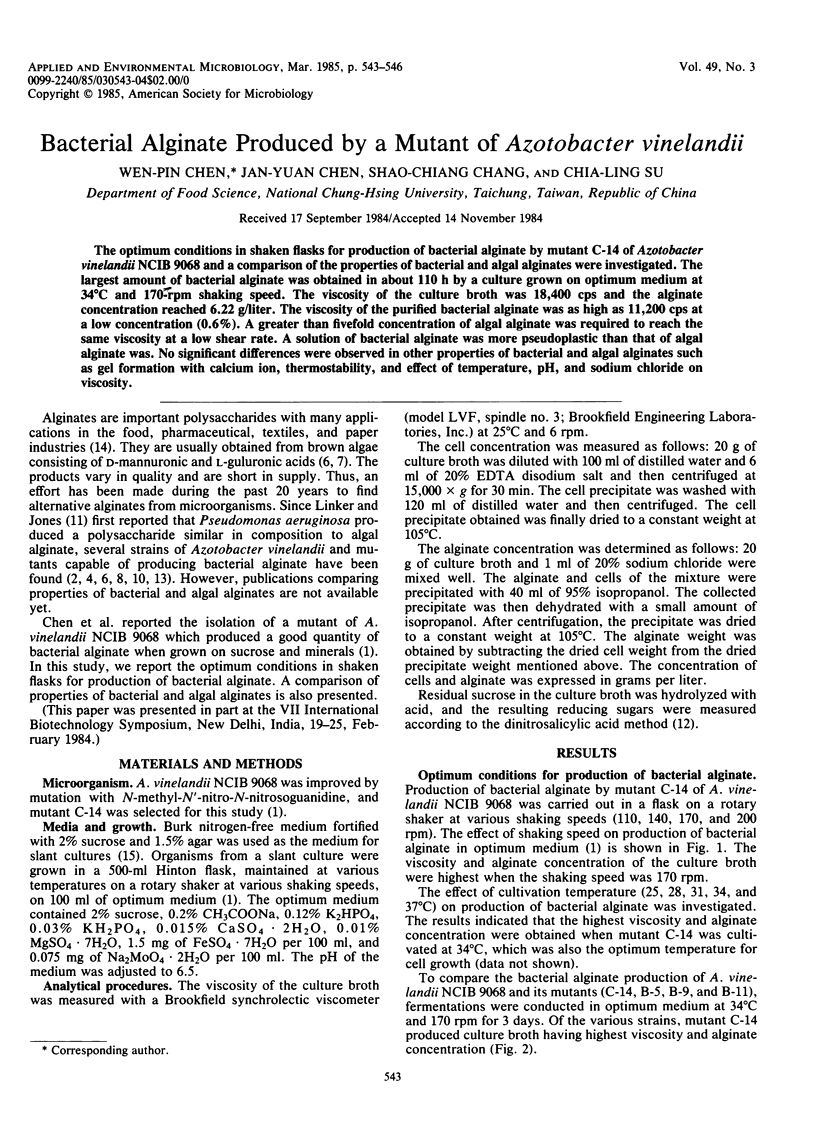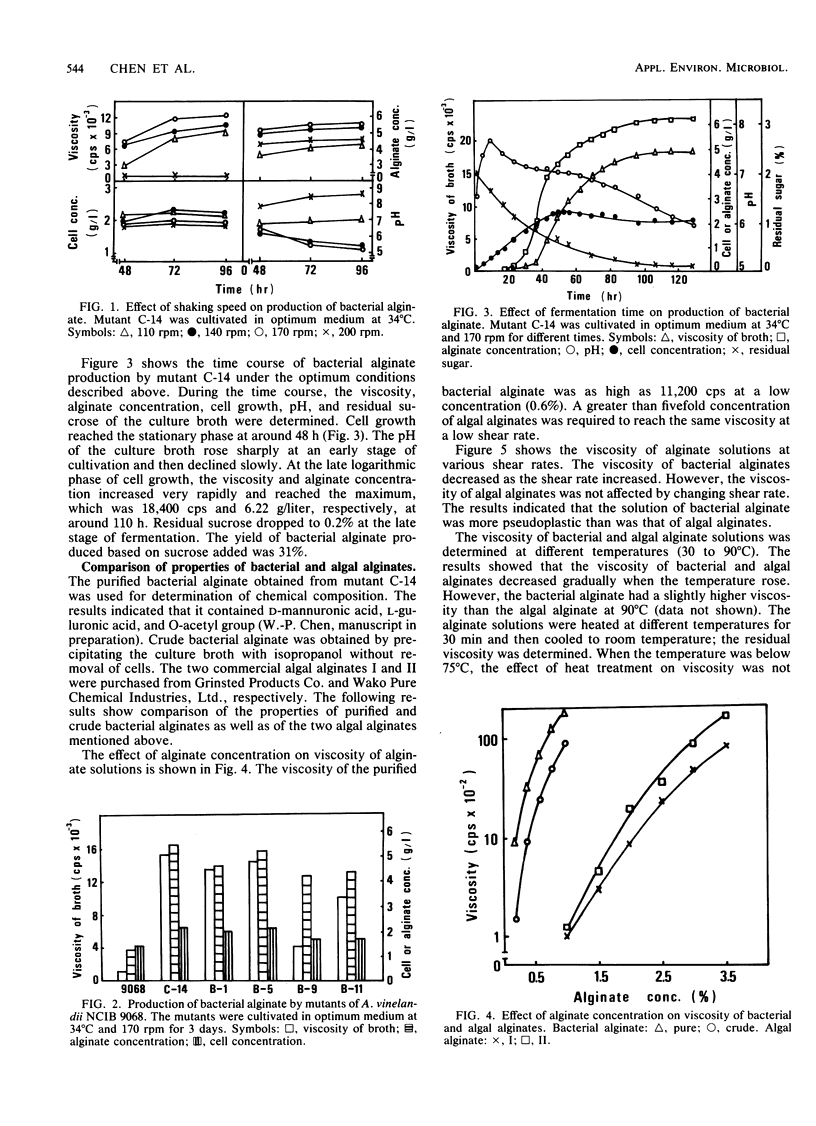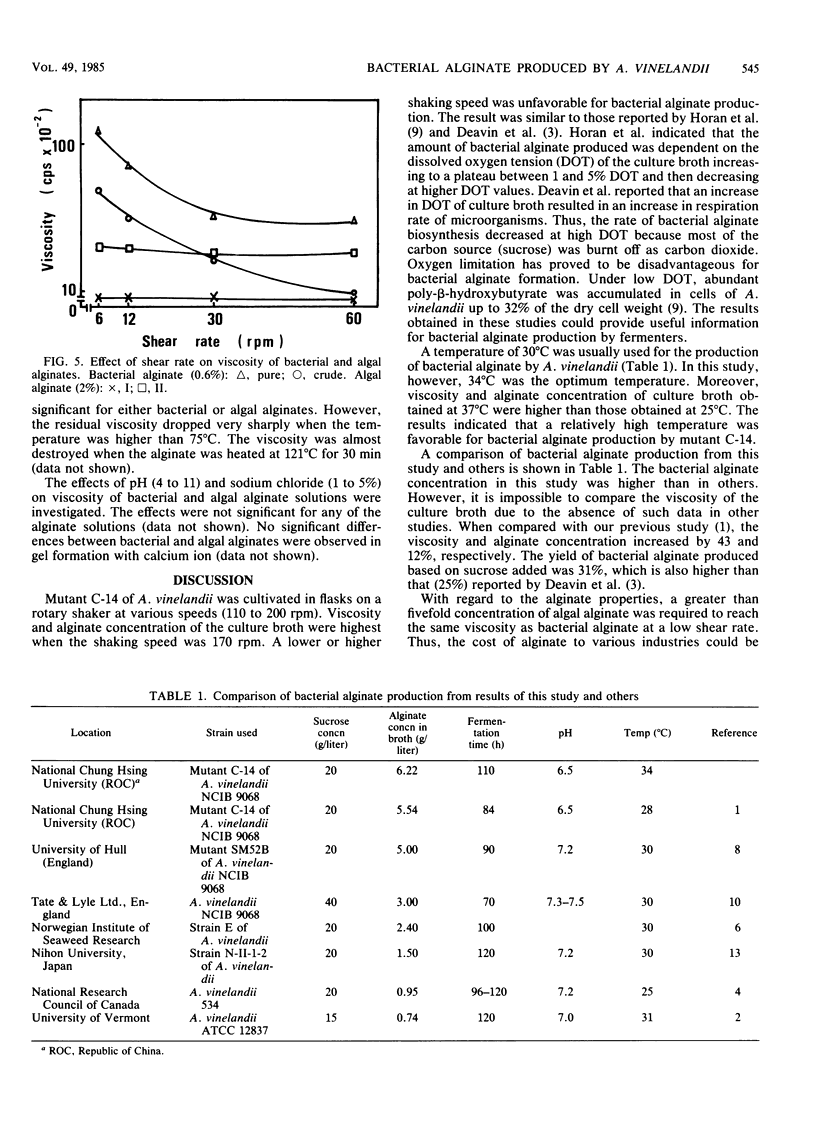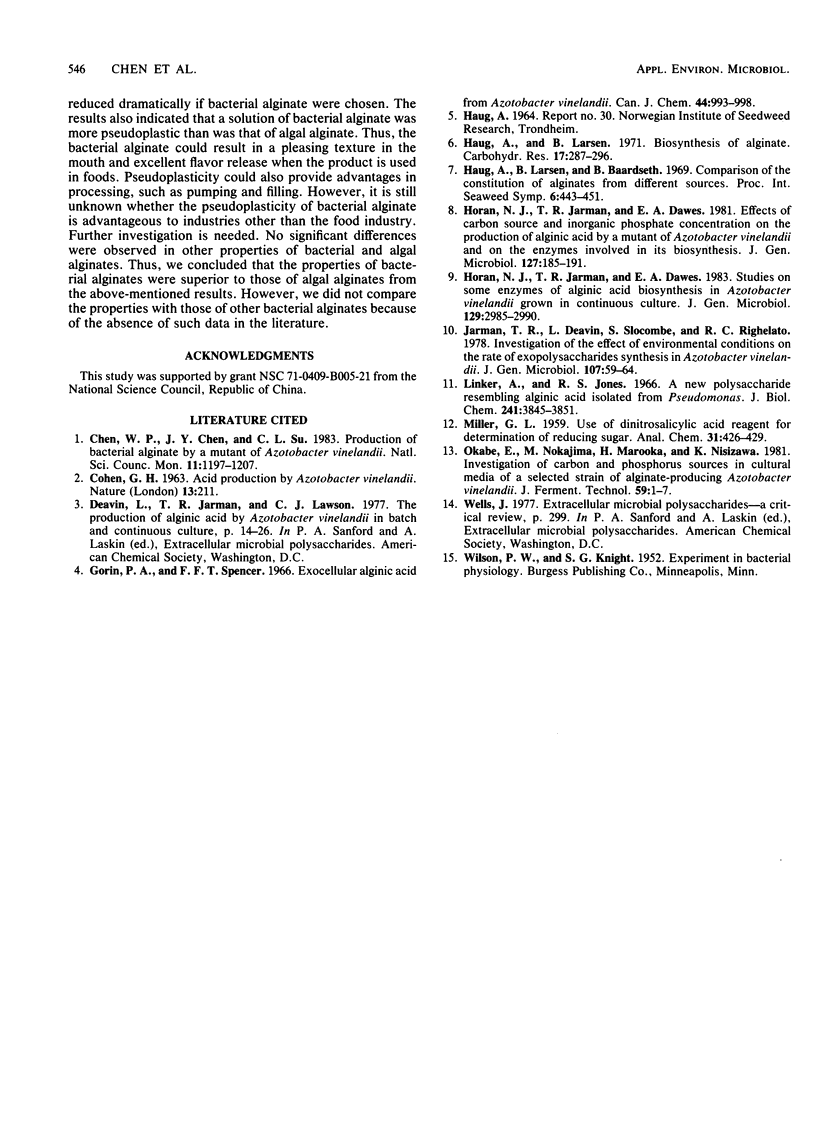Abstract
The optimum conditions in shaken flasks for production of bacterial alginate by mutant C-14 of Azotobacter vinelandii NCIB 9068 and a comparison of the properties of bacterial and algal alginates were investigated. The largest amount of bacterial alginate was obtained in about 110 h by a culture grown on optimum medium at 34°C and 170-rpm shaking speed. The viscosity of the culture broth was 18,400 cps and the alginate concentration reached 6.22 g/liter. The viscosity of the purified bacterial alginate was as high as 11,200 cps at a low concentration (0.6%). A greater than fivefold concentration of algal alginate was required to reach the same viscosity at a low shear rate. A solution of bacterial alginate was more pseudoplastic than that of algal alginate was. No significant differences were observed in other properties of bacterial and algal alginates such as gel formation with calcium ion, thermostability, and effect of temperature, pH, and sodium chloride on viscosity.
Full text
PDF



Selected References
These references are in PubMed. This may not be the complete list of references from this article.
- COHEN G. H., JOHNSTONE D. B. Acid production by Azotobacter vinelandii. Nature. 1963 Apr 13;198:211–211. doi: 10.1038/198211a0. [DOI] [PubMed] [Google Scholar]
- Larsen B., Haug A. Biosynthesis of alginate. 1. Composition and structure of alginate produced by Azotobacter vinelandii (Lipman). Carbohydr Res. 1971 Apr;17(2):287–296. doi: 10.1016/s0008-6215(00)82536-7. [DOI] [PubMed] [Google Scholar]
- Linker A., Jones R. S. A new polysaccharide resembling alginic acid isolated from pseudomonads. J Biol Chem. 1966 Aug 25;241(16):3845–3851. [PubMed] [Google Scholar]


